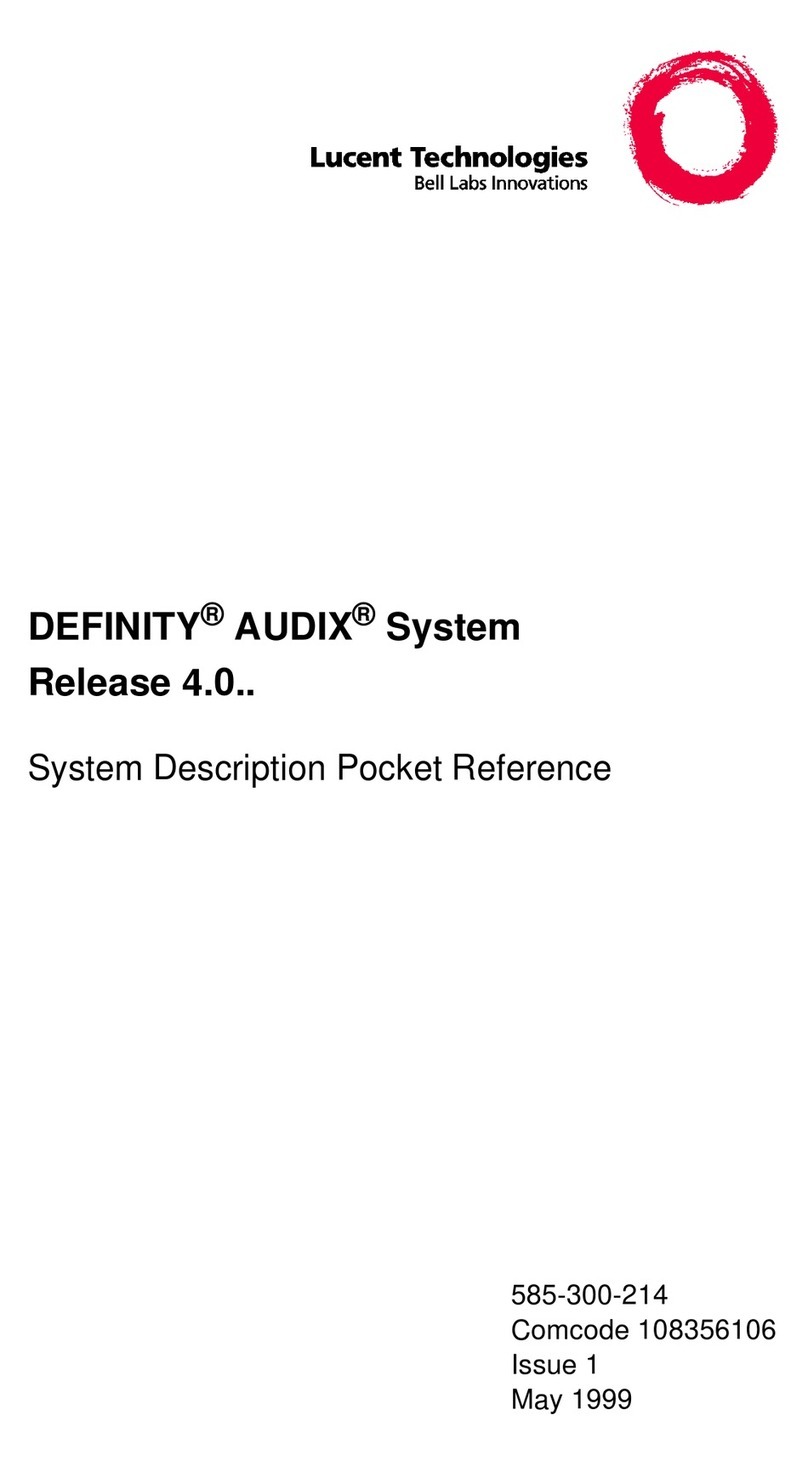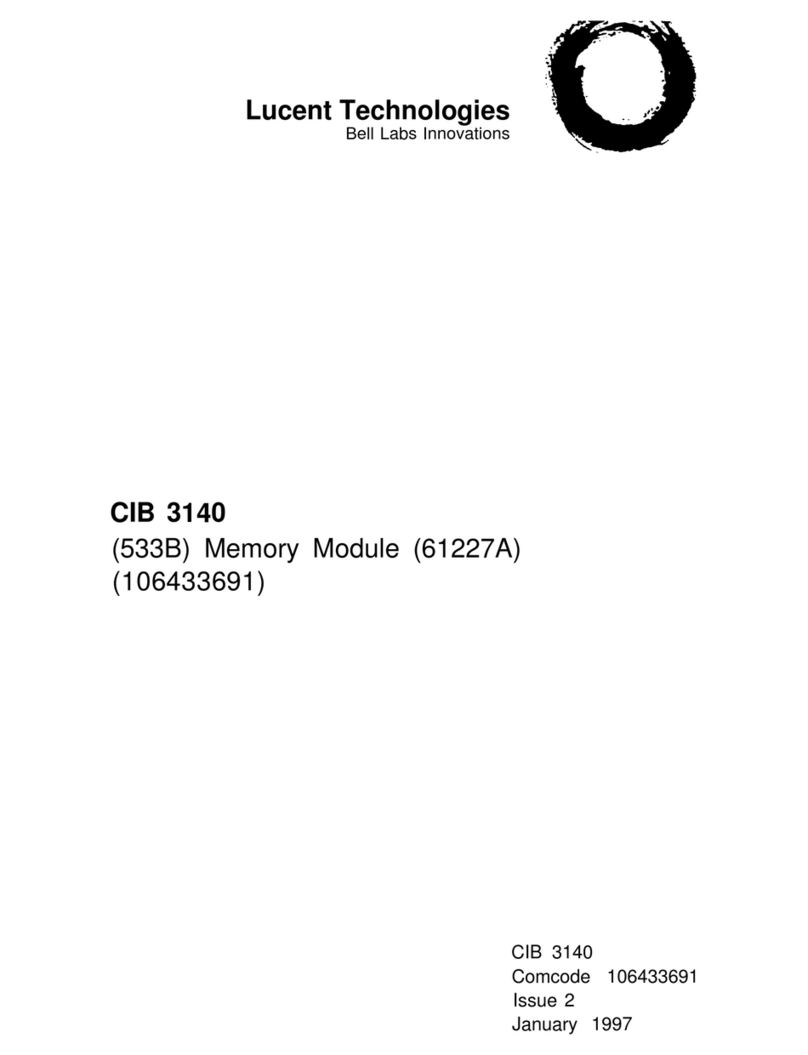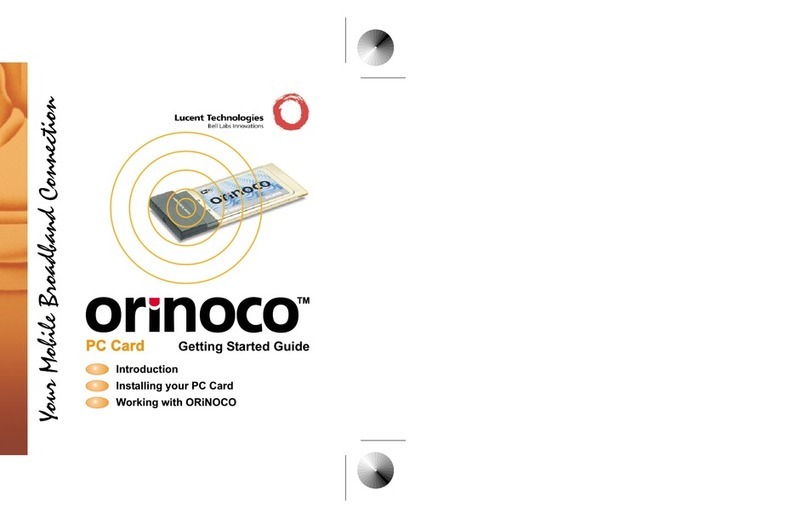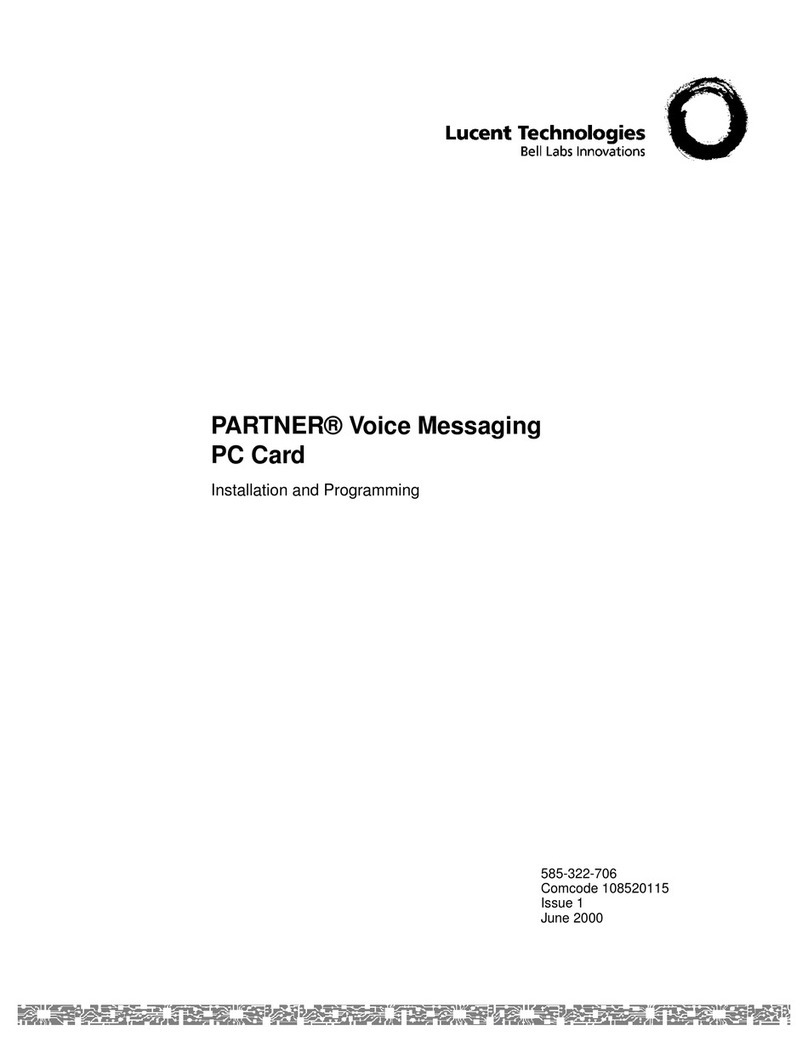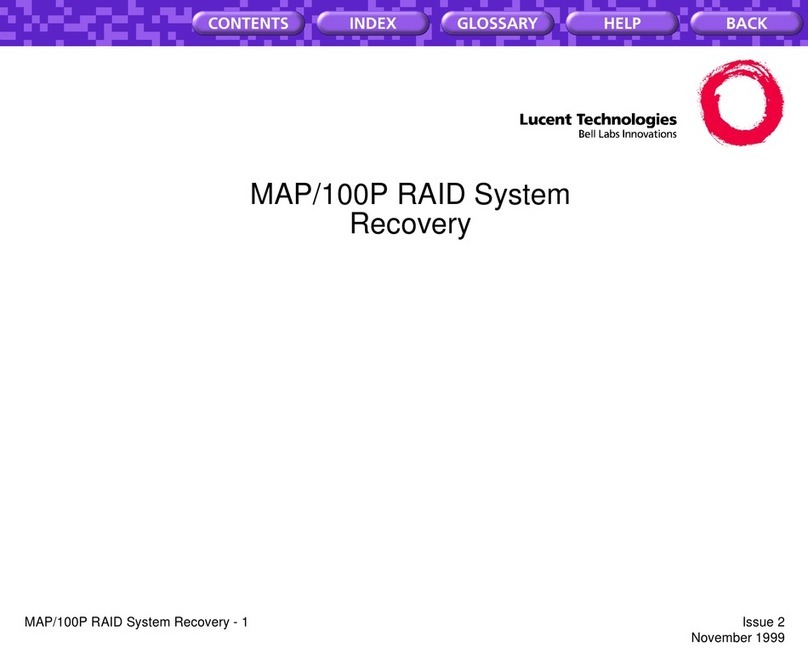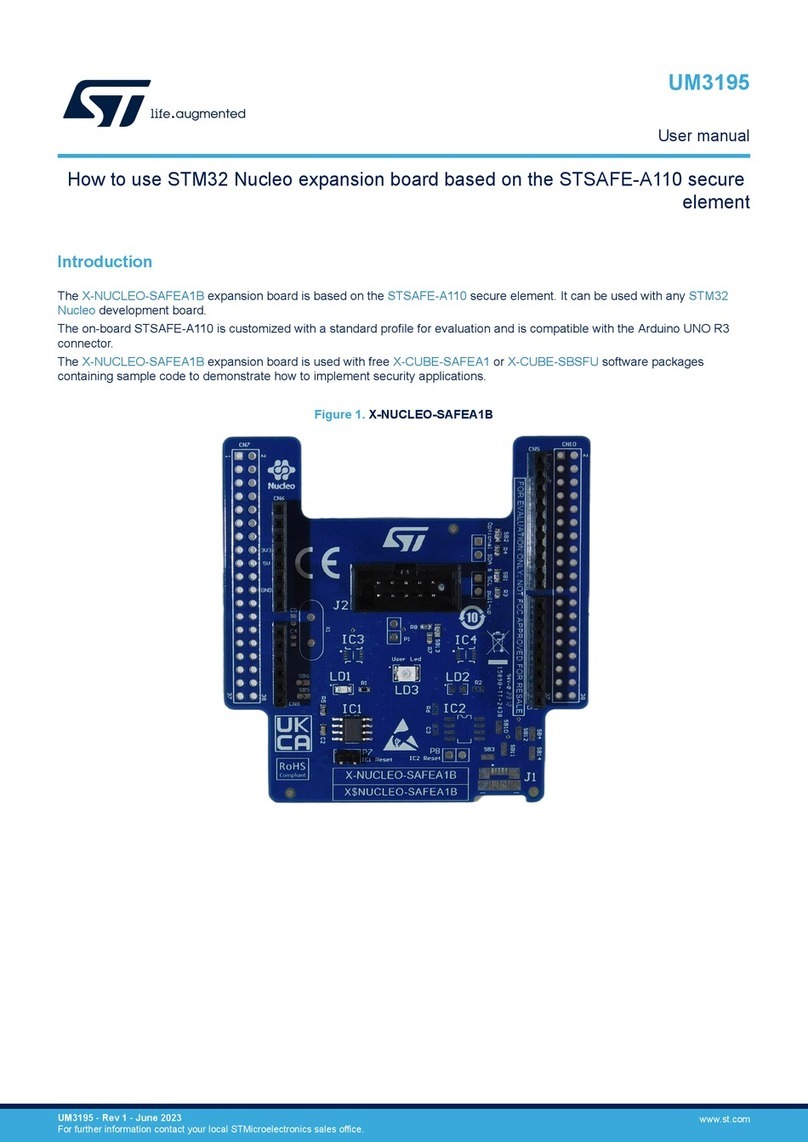
Copyright 1998 Lucent Technologies 585-322-706
All Rights Reserved Comcode 108355181
Printed in USA Issue 1
August 1998
Notice
Every effort was made to ensure that the information in this book was complete and accurate at the time of printing.
However, information is subject to change.
Your Responsibility for Your System's Security
Toll fraud is the unauthorized use of your telecommunications system by an unauthorized party, for example, persons other
than your company’s employees, agents, subcontractors, or persons working on your company’s behalf. Note that there
may be a risk of toll fraud associated with your telecommunications system, and if toll fraud occurs, it can result in
substantial additional charges for your telecommunications services.
You and your System Manager are responsible for the security of your system, such as programming and configuring your
equipment, to prevent unauthorized use. The System Manager is also responsible for reading all installation, instruction,
and system administration documents provided with this product in order to fully understand the features that can introduce
risk of toll fraud and the steps that can be taken to reduce that risk.
Lucent Technologies does not warrant that this product is immune from or will prevent unauthorized use of common-carrier
telecommunication services or facilities accessed through or connected to it. Lucent Technologies will not be responsible
for any charges that result from such unauthorized use.
Federal Communications Commission Statement
This equipment has been tested and found to comply with the limits for a Class A digital device, pursuant to Part 15 of the
FCC Rules. These limits are designed to provide reasonable protection against harmful interference when the equipment is
operated in a commercial environment. This equipment generates, uses, and can radiate radio frequency energy and, if not
installed and used in accordance with the instruction manual, may cause harmful interference to radio communications.
Operation of this equipment in a residential area is likely to cause harmful interference, in which case the user will be
required to correct the interference at his own expense.
Canadian Department of Communications (DOC) Interference Information
This digital apparatus does not exceed the Class A limits for radio noise emissions set out in the radio interference
regulations of the Canadian Department of Communications.
Le Présent Appareil Numérique n’émet pas de bruits radioélectriques dépassant les limites applicables aux appareils
numériques de la class A préscrites dans le reglement sur le brouillage radioélectrique édicté par le ministère des
Communications du Canada.
Trademarks
PARTNER, PARTNER MAIL VS, PARTNER MAIL, MLS-34D, MLS-18D, MLS-12D, MLS-12, MLS-6, MLC-6, MDC 9000,
MDW 9000, MDW 9010, and MDW 9030P are registered trademarks of Lucent Technologies in the U.S. and other countries.
Ordering Information
Call: Lucent Technologies Publications Center
Voice 1 800 457-1235 International Voice 317 322-6791
Fax 1 800 457-1764 International Fax 317 322-6699
Write: Lucent Technologies Publications Center
2855 N. Franklin
Indianapolis, IN 46219
Order: Document No. 585-322-706, Issue 1, August 1998, Comcode 108355181
Support Telephone Number
In the continental U.S., Lucent Technologies provides a toll-free customer helpline 24 hours a day. Call the Lucent
Technologies Helpline at 1 800 628-2888 or your Lucent Technologies authorized dealer if you need assistance when
installing, programming, or using your system. Consultation charges may apply. Outside the continental U.S., contact your
local Lucent Technologies authorized representative.
Lucent Technologies Fraud Intervention
If you
suspect you are being victimized
by toll fraud and you need technical support or assistance, call Technical Service
Center Toll Fraud Intervention Hotline at 1 800 643-2353.
WWW Home Page
The WWW home page for Lucent Technologies is
www.lucent.com
.
